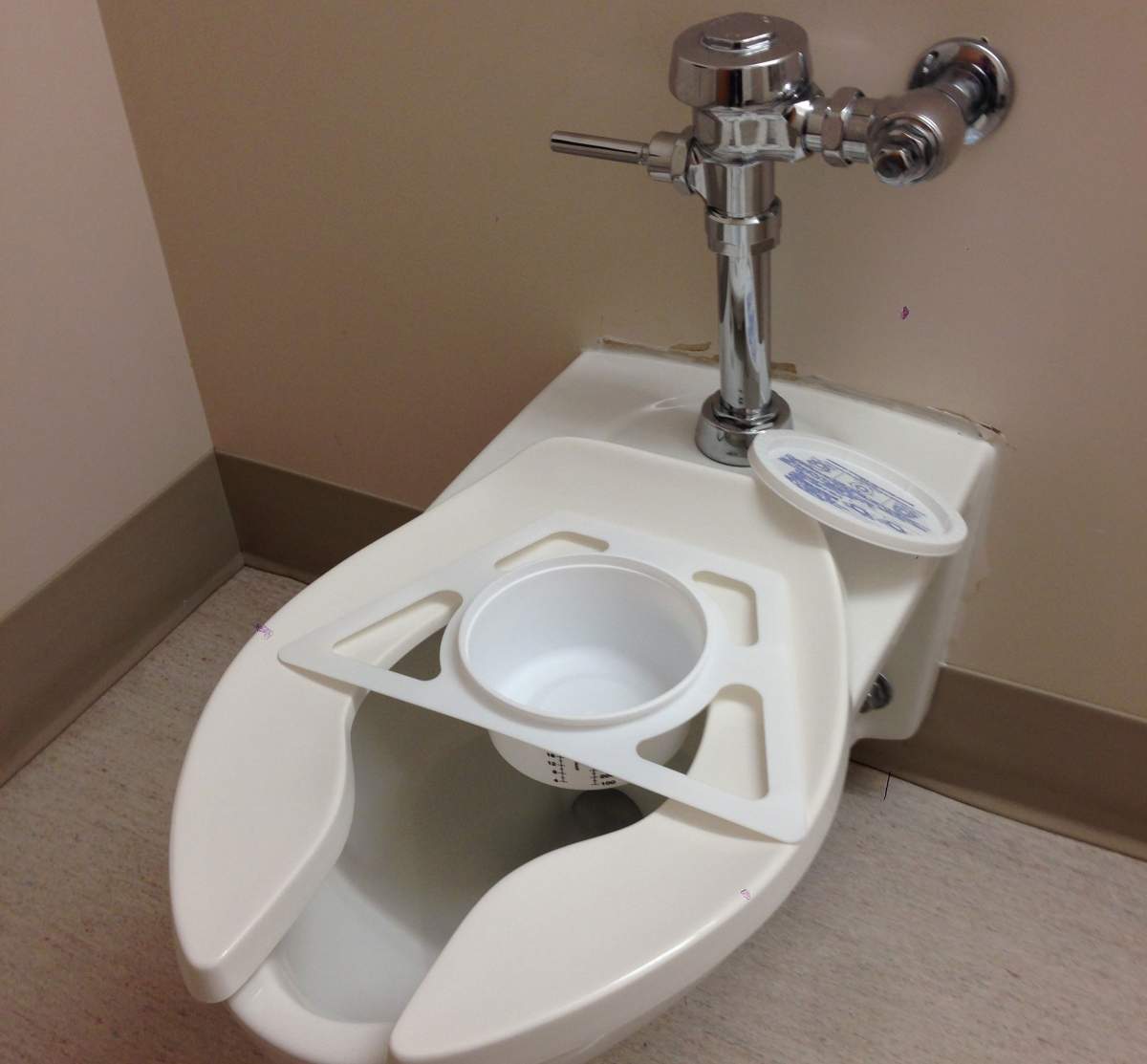Once every two weeks or so, Ralph Ennis-Davis carries a plastic tub, sealed in two Ziploc bags and zipped into a leather messenger bag, into an Edmonton hospital and drops it off in the fridge.

Inside that tub, which looks something like a margarine container, is his donation: a sample of his own feces.
He’s told by the lab technicians that his donations are particularly helpful.
“My stool is working. And when they have a really bad case they use my stool.”
Ennis-Davis has contributed his stool to the fecal microbiota transplantation program at the University of Alberta hospital for nearly seven years. That program uses donations like his to help cure people with persistent Clostridium difficile infections, through a procedure known as a fecal transplant.
And they’re looking for more donors, said program director Dr. Dina Kao. “We always want to have more donors.” That’s why the team has been conducting surveys to try to figure out how to motivate people to bring in their poo.
Fecal transplants 101
Here’s how donations help.
Some people might receive a course of antibiotics to help cure an infection, she explained. But it’s hard to just target the specific microorganism that is making someone sick, so often there is “collateral damage.” This can mean that the benign or helpful bacteria living in your gut is wiped out too, leaving lots of space for an opportunistic organism like C. difficile to move in, multiply and start producing toxins that can lead to severe diarrhea, fever and in some cases even death.
That’s what happened to Judith Greenwood, who received antibiotics for sinusitis. She was infected with C. difficile, and even after more treatments, it just wouldn’t go away. “I couldn’t go out of the house or seven feet from the bathroom for six months,” she said.
She “bought a lot of diapers,” stayed home and lost 32 pounds over the course of her infection.

Get weekly health news
“I got to know my bedroom and bathroom really well, though. I probably spent $10,000 on diapers as well.”
So when she was offered the chance to have a fecal transplant, “I jumped on it right away because I didn’t know how many more months I could tolerate of that other.”
As a former medical radiation technologist, she wasn’t put off by the procedure, which she can still describe in detail. “It’s like having an enema, only it’s feces that they put in. They remove yours first, with a suction thing. And then they put in the donor’s feces.”
WATCH: It may sound unpleasant, but an Edmonton doctor is using fecal transplants to make a huge difference for patients who are incredibly sick. Su-Ling Goh explains.
Essentially, a fecal transplant is exactly what it sounds like: the donor’s feces, after being tested and processed, is put directly into the patient, generally through an enema or colonoscopy, though more recently a pill version is also being used.
The bacteria from that donation take root in the patient’s intestine, crowding out the dangerous bacteria like C. difficile, and replacing it with a more normal mix of different organisms.
And it works. According to Kao, the success rate is about 95 per cent.
“It worked right away,” said the 71-year-old Greenwood. “All went absolutely perfect, 100 per cent. I would recommend it to anybody who has that same situation going on.”
“I could have danced home to Red Deer from Edmonton that day. But it was a little too far.”
More donations
Although Kao says her program currently has enough donors to meet the needs of the roughly 100 people they treat annually, she’s always looking to expand the pool.
When a longtime donor moves away or becomes ineligible due to infection or some other reason, it has an impact on the program. So the more potential donors, the better.
“This is why we think it is very important to try to develop strategies to be able to recruit and retain the stool donors.”
Only a small percentage of people can qualify. To do so, they have to pass a questionnaire and go through a battery of blood and stool sample tests to make sure that they won’t pass along any dangerous pathogens to the patients.
According to her team’s research, many people are motivated by altruism, said Kao. “They just want to help people.” Giving them feedback of how their donations help can motivate them to keep coming back, she said.
Survey respondents also said that economic compensation — getting paid for their poop — can be a good motivator.
Ennis-Davis said that he mostly does it to help others. As a healthcare worker himself, he’s aware of the benefits. “I don’t see how I, as a healthy, regular adult, wouldn’t be able to do this.”
“I live in this world. I see the issues these patients have and the severity of this disease and this simple task can super-help them.”
It’s not as invasive as giving blood, he said, but it comes with its own challenges.
“It’s a tough thing. You’re delivering a bucket of poo. It smells terrible.”
Although his wife knows he donates, she’s told him she never wants to see the containers around the house even if they’re clean, he said. “I guess whoever takes it on needs to realize that although everyone conceptually knows it’s a good thing, in the end, you’re still transporting around poo.”
Kao suggests that anyone who is interested in becoming a donor look up programs in their area. People who live in Edmonton, near the university, can call her office at 780-492-8307.

.jpg?w=1040&quality=70&strip=all)

Comments